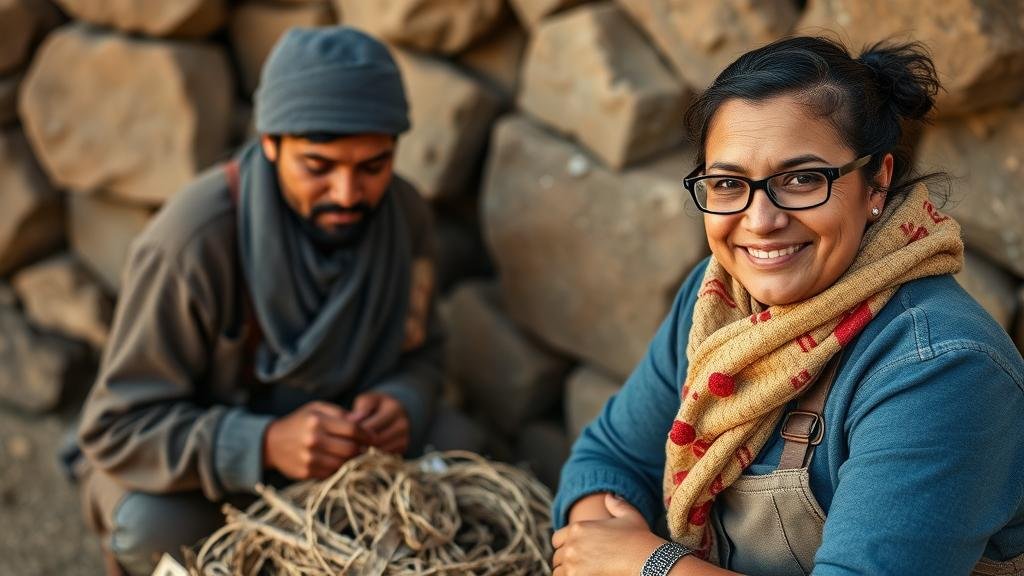Mining First-Person Accounts of Missionary Work for Artifact Leads
Mining First-Person Accounts of Missionary Work for Artifact Leads
Understanding the historical context and personal experiences of missionaries can provide invaluable insights into artifacts that may not be well-documented in traditional records. This research article aims to explore the methodologies and significance of mining first-person accounts of missionary work to uncover potential leads for historical artifacts. Through an examination of various primary sources including letters, diaries, and autobiographies, this article emphasizes the importance of integrating personal narratives into artifact research.
Introduction
The missionary movement significantly impacted various cultures around the globe, particularly during the 19th and early 20th centuries. Accounts from missionaries provide perspectives that can reveal the contexts in which artifacts were created, traded, or used. By analyzing these firsthand narratives, researchers can identify tangible leads for artifacts linked to missionary work, assisting in both historical scholarship and preservation efforts.
Historical Context of Missionary Work
Missionary activity surged in the 19th century alongside imperial expansion. Organizations such as the London Missionary Society (founded in 1795) and the American Board of Commissioners for Foreign Missions (founded in 1810) dispatched individuals to various regions, including Africa, Asia, and the Pacific Islands. e missionaries often compiled personal accounts documenting their experiences.
- Early Engagements: In places like the South Pacific, missionaries recorded detailed observations of indigenous customs, language, and material culture.
- Documented Accounts: These accounts often include valuable descriptions of local artifacts, art forms, and their uses within cultural practices.
Methodology for Mining Personal Narratives
This study employed qualitative analysis of selected primary source documents, including:
- Diaries and Journals: These can provide day-to-day insights into the interactions between missionaries and local populations.
- Correspondence: Letters exchanged between missionaries and their supporters or family can reveal intentions and reflections on local cultures.
- Autobiographies: Personal memoirs contextualize missionary efforts and unintended consequences of these endeavors.
For example, the journal of the Reverend John Williams, who worked in the South Pacific during the mid-19th century, contains descriptions of artifacts produced by the islanders, including carved wooden masks used in ceremonial dances. Such details can lead archaeologists or historians to specific artifacts tied to these cultural practices.
Case Studies: Notable Accounts and Artifact Connections
To illustrate the importance of first-person accounts, this section presents case studies of missionaries whose records led to significant historical discoveries.
- David Livingstone (1813-1873): Livingstone’s journals document his observations in Africa, particularly regarding local craftsmanship. His noted descriptions of tools and textiles have influenced subsequent archaeological digs in Zambia, revealing evidence of trading networks.
- Mary Slessor (1848-1915): Active in Nigeria, Slessor’s letters include detailed discussions about local artifacts used in traditional practices. Her references to indigenous pottery have informed conservators in their efforts to trace the lineage of certain cultural artifacts.
Challenges in Interpretation
While first-person accounts are invaluable, they are not devoid of challenges. Factors to consider include:
- Subjectivity: The personal biases of missionaries may color their descriptions, impacting the reliability of the accounts.
- Cultural Misunderstanding: Misinterpretations of practices or artifacts might arise due to language barriers or insufficient cultural context.
- Historical Context: The colonial mindset of many missionaries can skew their observations, complicating the reconstruction of authentic cultural narratives.
In addressing these concerns, researchers must employ a multidisciplinary approach, collaborating with anthropologists and local historians to contextualize findings accurately.
The Role of Technology in Artifact Discovery
The integration of technology, such as digital archives and advanced search engines, has revolutionized the accessibility of missionary narratives. Initiatives such as the HathiTrust Digital Library and the Internet Archive have digitized numerous primary accounts, facilitating enhanced research opportunities. This technological shift allows historians and archaeologists to cross-reference descriptions of artifacts with existing collections in museums and private collections.
Conclusion
Mining first-person accounts of missionary work opens a pathway to uncovering valuable leads for historical artifacts. By piecing together narratives from missionaries, researchers can enhance our understanding of cultural interactions and the artifacts that emerged from them. But, care must be taken to critically assess the biases and limitations inherent in these accounts.
Future research should focus on:
- Developing frameworks that integrate first-person narratives with interdisciplinary scholarly methods.
- Enhancing accessibility to both physical and digital archives housing missionary accounts.
- Fostering collaborations among historians, archaeologists, and indigenous communities to reconstruct accurate narratives and ensure the preservation of cultural heritage.
To wrap up, first-person accounts of missionary work serve as an essential resource for uncovering artifacts linked to cultural practices and historical events, providing valuable insights into the past.



